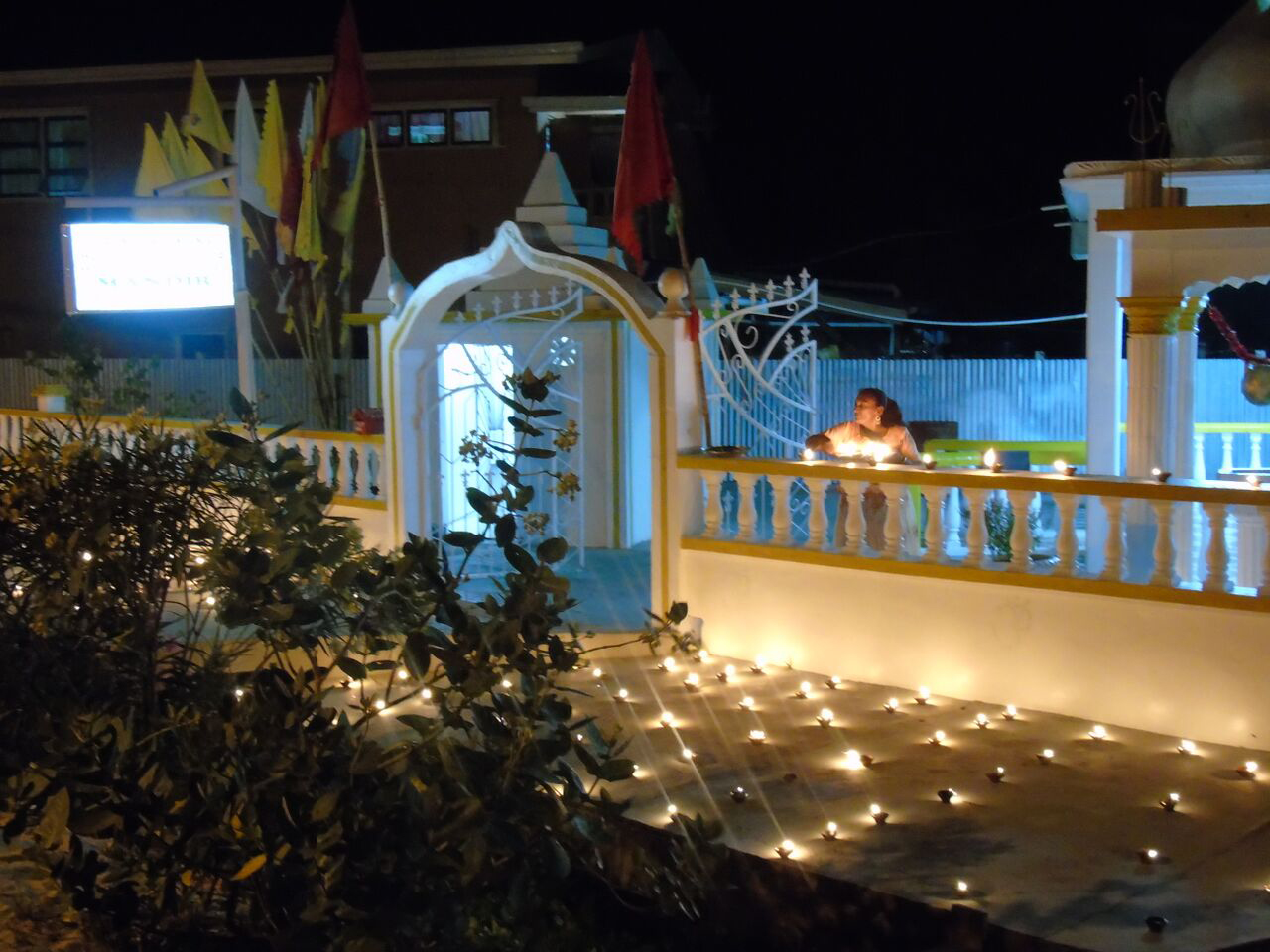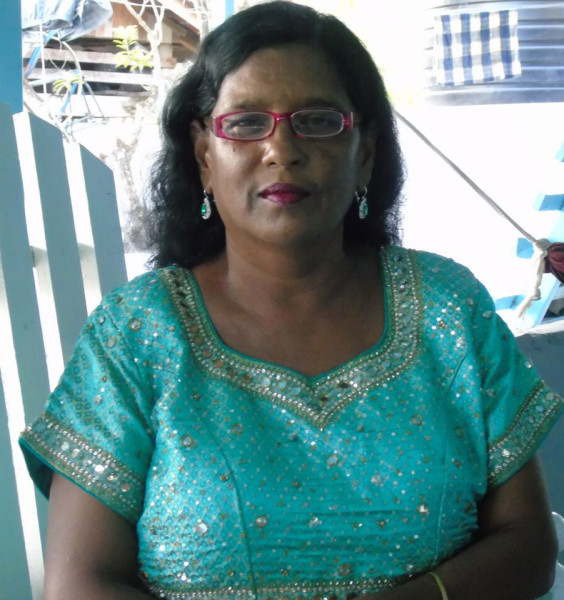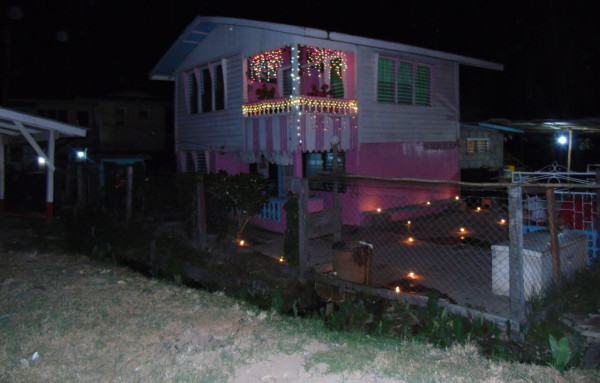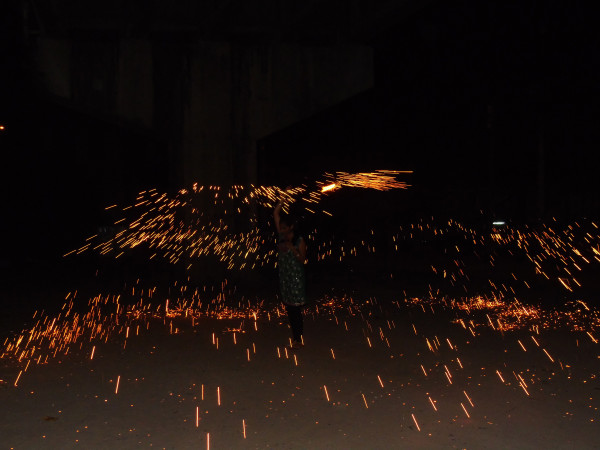Photos by Jannelle Williams
Diwali – the Festival of Lights is celebrated by Hindus across the globe primarily with rows of lights that illuminate the world on what is considered to be the darkest night of the year. During Diwali which marks new beginnings, lamps are lit to celebrate the triumph of good over evil, firecrackers are set off to drive away evil spirits, and prayers for prosperity are offered to Lakshmi, the goddess of wealth. However, while the festival is celebrated for a variety of reasons, the main theme which runs throughout is the triumph of light over darkness.
This is particularly true for the Sanathans. Pandit Lakeram Deodhari who hails from a long line of pandits, said when he was a lad he knew “celebrating Diwali was about lighting up [diyas] but you don’t know about the meaning of these things or why you do it.” It was only as he grew older he learnt the significance of the Hindu festival. “As I got involved in the religion and the activities and I read, I learnt that Diwali is about removing evil; removing darkness, bringing light into your home. For it really means good over evil.”
Moreover, he added, cleanliness plays a major role in the observance. “People would clean the whole place and believe that look on this day when I light this diya, Lakshmi Maa is going to be present in this home to shower health, wealth and prosperity on us.” Without these he said, “The home does not have meaning”. With the presence of health, wealth and prosperity, it is believed the home will experience peace. “So people lighting diyas know that the light will bring about brightness in their lives.”
He was quick to add though, that “remove darkness and create light doesn’t mean night time and day time. In your life there can be many representations of darkness.
“Some people do not have happiness or may encounter difficulties or a blockage causing them to not be successful in life, so with lighting the diyas with faithfulness and devotion you believe Lakshmi can remove all of this and make you happy; not only physically but spiritually also.”
Add to this the fact that all the religious books of Hinduism are now translated into English, “more and more people celebrating because they now know what it means. So you find now not only Hindu people lighting diyas but others who know the meaning of the lights.”
With this, some persons, Hindus and non-Hindus alike have taken to incorporating the use of fairy lights in their Diwali celebrations. And according to the Pandit, “There is no difference between the diyas and other sources of artificial light. The different colours of light mean different aspects of life.” He explained that the use of the fairy lights allows devotees to appeal to the different aspects of the goddess Lakshmi. “Blue means endless love; yellow, universal mother; red, all prevailing mother. So the colours all represent different aspects of Lakshmi Maa,” he revealed.
Further, he noted, “In those days, people used diyas because there was nothing like current [electricity]. So people lighted a lot of diyas. Now there is current, and with it people utilize other sources of light to beautify the place.”
Some Hindu devotees believe Diwali to be originally a harvest festival. And as such, the Diwali for the Arya Samaj group for instance, means harvest time: the celebration of one’s blessings and prosperity at the end of a bountiful harvest. To this end, celebrants would clean their homes in preparation of the day, dress in their finery on the day and take their produce to the temple as offerings to god as thanks for another successful harvest. “When I was small and I know Diwali time, we use to really clean up the house in preparation for Diwali,” recalls Kewalpatie Dayaram.
She added that “I remember my father use to buy new clothes and we would wear it for the first time on the day of Diwali.” According to the Arya Samajist, “On Diwali day we would go to the mandir and we spend time doing havan [a ritual in which offerings are made into a consecrated fire] and it is harvest time.” Dayaram remembers devotees bringing the produce from their gardens and other items including sweet meats to those special services. “Since I was small and go to the mandir at Adelphi, they use to bring out a lot of things that grow in the yard or in the farm: paddy, mango, banana, coconut; and some people would make sweet meats and they take it to the mandir and they share it,” Dayaram said. Often too, she noted, “They would have a ‘bring and buy’ sale and the money goes to the mandir.” Dayaram explained that “The sale was usually an auction sale with items being offered individually to the highest bidder.” This practice is still an integral part of their annual Diwali celebrations to this day.
For Dayaram though, the making of the diyas from mud is one of the favourite activities she remembers from her youth in celebrating Diwali. “We use to make it when I was a little girl. Every year, the day before Diwali we use to make diyas from white mud and put it to dry in the sun and it would get hard.” Now however, diyas are purchased from the store.
In addition to celebrating Diwali as a harvest festival, members of the Arya Samaj movement observe Diwali day as a memorial day for the movement’s founder, Dayanand Saraswati. On Diwali day, the founder of Arya Samaj, Swami Dayanand was assassinated. And as with tradition, the passing of a great soul like him is not mourned, but celebrated. Swami Dayanand was said to have survived 13 assassination attempts on his life by poisoning, but succumbed to the 14th attempt which occurred on Diwali in 1883.
“We normally light diyas but our reasons for doing so is really to celebrate Rishi Nirvaan for that’s the day that Swami Dayanand died on,” Dayaram explained. “So we celebrate him by lighting diyas and going to the temple to worship and recommit ourselves to spreading his many truths.”
Coinciding with the Hindu New Year, Diwali usually falls between the middle of October and the middle of November, although this is decided upon by the Hindu lunar calendar. The festival of lights celebrates new beginnings and while each branch in Hinduism has its own reason to celebrate the festival, one of the most popular stories told is the legend of Lord Rama and his wife Sita returning to their kingdom in northern India from exile after defeating the demon king Ravanna in the 15th century bc. Thus the lighting of diyas and large firework displays by devotees are reminiscent of the celebrations which as the legend tells it, took place upon Rama’s return as villagers lit earthen lights to guide his path and set off their own version of fireworks.
It is from this, the Hindu devotees who worship Mother Kali and refer to themselves as ‘Madras’ take inspiration to celebrate Diwali. According to Narine Dhanpat who identifies with the Madras group, Diwali is about togetherness, unity and obedience. These themes, he said, the Madras believe, are all present in the story of Ram. “Lord Ram was exiled but he did not rebel against his parents’ wishes, he quietly accepted their decision and obeyed. Also Sita stood by him and endured it all and they were rewarded at the end when the villagers united to light their path out of exile,” Dhanpat said. This feeling of togetherness and trying to emulate the story of Lord Ram, is why these Hindu devotees celebrate Diwali. However, Dhanpat believes that the reason they originally celebrated Diwali is beginning to fade as persons move away from each other. “Diwali means togetherness and back in the days we had more unity than now,” he lamented. “Everybody becoming too sceptical now so they not as cooperative as before; even to community service, they not mingling as before.” Elaborating further, he said “Nowadays you got to ask; first time you didn’t have to ask for things to decorate the temple and stuff, people does just volunteer to give you. Now you got to ask, and even when you do, it doesn’t guarantee you will get.”
Nevertheless, Dhanpat and his family still celebrate Diwali every year with much vigour. “Traditionally people use diyas, but as time advance people start use candles and now fairy lights because oil and thing expensive. But we still light up diyas and share a little sweetmeat to our neighbours.”
Aside from lighting traditional earthen diyas and decorating their houses with colourful rangoli artworks (patterns created on the floor using coloured rice or powder) to celebrate the festival of light, during Diwali, families and friends share sweets and gifts and there is also a strong belief in giving food and goods to those in need.






